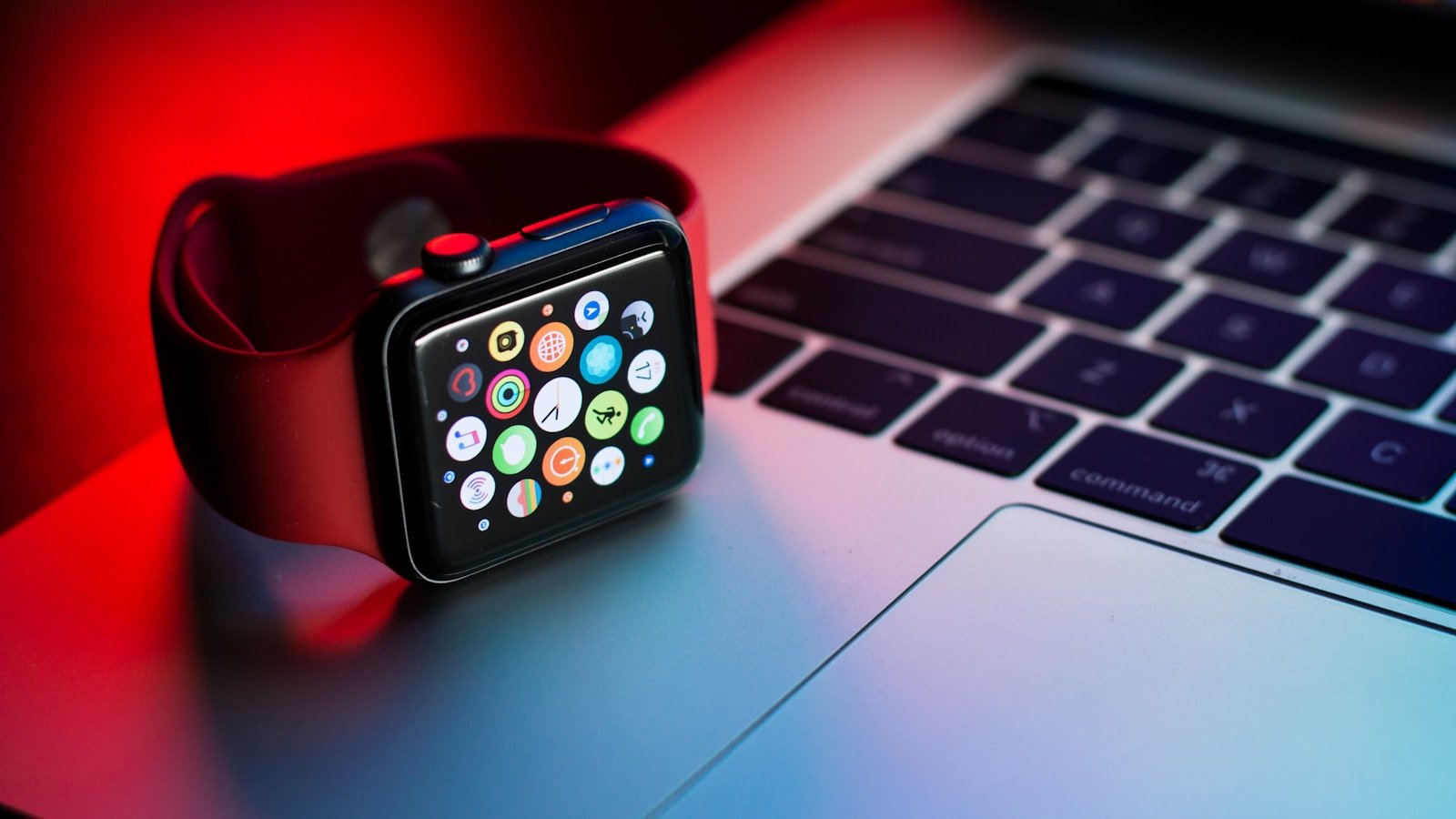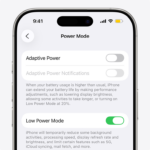Apple Watch has firmly established itself as the leader in the smartwatch market, combining sleek design, powerful health tracking, and seamless integration with the Apple ecosystem. As 2025 unfolds, anticipation is mounting for the next-generation Apple Watch Series 11 and the Apple Watch Ultra 3, both expected to bring significant advancements that could redefine wearable technology once again.
Design Evolution: Refinement Over Revolution
While Apple tends to favor incremental design improvements over radical changes, rumors indicate that the 2025 Apple Watch models will continue this trend with subtle yet impactful refinements. Expect a slightly slimmer and lighter casing, improved durability with enhanced titanium or ceramic options, and new color finishes to appeal to a broader audience.
The Apple Watch Ultra 3, targeted at extreme sports enthusiasts and adventurers, is rumored to feature an even more rugged build with enhanced water resistance and shockproofing, pushing the limits of what a smartwatch can endure in harsh environments.
Health and Fitness: The Heart of Apple Watch Innovation
Apple’s commitment to health monitoring remains the driving force behind the Apple Watch’s popularity. The 2025 lineup is expected to introduce new sensors and improved algorithms for even more accurate health metrics.
Blood Pressure Monitoring:
One of the most anticipated features is non-invasive blood pressure monitoring. While previous Apple Watch models have offered heart rate and blood oxygen tracking, integrating blood pressure measurement would place Apple at the forefront of smartwatch health technology, allowing users to monitor hypertension and cardiovascular health more conveniently.
Advanced Sleep and Stress Tracking:
Building on the existing sleep tracking capabilities, the new Apple Watch will likely offer deeper insights into sleep stages, breathing patterns, and stress levels, leveraging AI to provide personalized wellness recommendations.
Temperature and Hydration Sensors:
Emerging reports suggest the inclusion of skin temperature sensors and hydration monitoring, which could help users better understand their overall health, detect early signs of illness, and optimize hydration for athletic performance.
Performance and Battery Life: More Power, Longer Use
Under the hood, the Apple Watch Series 11 and Ultra 3 are expected to be powered by the new S9 chip, delivering faster processing speeds and improved energy efficiency. This advancement should translate into smoother app performance, quicker health data analysis, and enhanced support for third-party apps.
Battery life is another critical area of improvement. While current models offer up to 18 hours of use, the 2025 models are rumored to push this boundary further, potentially offering 24+ hours on a single charge. This would be a game-changer for users who rely on their watch for continuous health monitoring and outdoor activities.
Connectivity and Ecosystem Integration
The Apple Watch 2025 lineup will continue to deepen its integration with the broader Apple ecosystem. Enhanced 5G connectivity is expected, enabling faster data transfer and more reliable streaming without the need for an iPhone nearby.
New software features introduced in watchOS 11 will leverage AI-powered assistants, smarter notifications, and improved workout tracking. The watch will also likely support new modes for remote health consultations, telemedicine, and even mental health support, reflecting the growing role of wearables in healthcare.
Environmental Sustainability and Materials
Apple has made strong commitments to environmental responsibility, aiming for a carbon-neutral supply chain by 2030. The 2025 Apple Watch models are expected to incorporate more recycled materials and eco-friendly manufacturing processes without compromising quality or durability.
Market Impact and Consumer Expectations
With competitors like Samsung, Garmin, and Fitbit continually innovating, Apple’s 2025 Apple Watch lineup needs to maintain its edge. The expected hardware upgrades and new health features position Apple well to retain its market-leading status and attract new users from both fitness enthusiasts and health-conscious consumers.
Final Thoughts
The Apple Watch 2025 models promise to be more than just incremental updates. With advancements in health monitoring, battery life, durability, and AI integration, Apple is set to further cement the watch’s role as an indispensable health and lifestyle companion.
Whether you’re a seasoned athlete, a health-conscious individual, or someone looking to stay connected in a sleek, wearable form, the upcoming Apple Watch Series 11 and Ultra 3 are shaping up to deliver compelling reasons to upgrade.
Stay tuned for Apple’s official announcements later this year, where we expect to get a full picture of how these innovations will enhance everyday life.
Google Pixel Watch vs Apple Watch
Choosing between the Google Pixel Watch and Apple Watch can be tough. Both smartwatches offer impressive features, but they work best with their own phone brands. The Pixel Watch has a classic round design while the Apple Watch sticks with its famous square shape.
The Pixel Watch 3 offers longer battery life than the Apple Watch Series 9, with Google’s watch lasting up to 24 hours with the always-on display active. When it comes to fitness tracking, the Pixel Watch provides more frequent heart rate updates than Apple’s device, which only refreshes every five minutes unless in workout mode.
For those already invested in either ecosystem, your choice might be clear. Apple Watch works seamlessly with iPhones, while the Pixel Watch integrates perfectly with Android devices. Both watches have their strengths in different areas like design, battery performance, and app selection.
When comparing the Google Pixel Watch and the Apple Watch, it’s essential to remember that the Apple Watch is designed exclusively for iPhones (iOS), and the Google Pixel Watch is designed for Android phones (Wear OS). You cannot mix and match them.
Here’s a table highlighting key differences, generally focusing on the latest models (Pixel Watch 3 and Apple Watch Series 10/Ultra 2) for general comparison:
| Feature/Category | Google Pixel Watch (e.g., Pixel Watch 3) | Apple Watch (e.g., Series 10, Ultra 2) |
| Operating System | Wear OS by Google | watchOS |
| Phone Compatibility | Android 9.0 or newer (optimally Pixel phones) | iPhone (iOS) |
| Shape | Circular | Rectangular |
| Display | AMOLED, Custom 3D Corning Gorilla Glass (e.g., 2000 nits peak brightness on PW3) | Retina LTPO OLED (e.g., up to 2000 nits on S10, 3000 nits on Ultra 2) |
| Case Material | Recycled Aluminum (some models may have stainless steel or other options) | Aluminum or Titanium (Series 10 and Ultra 2 respectively) |
| Sizes | Typically two sizes (e.g., 41mm, 45mm) | Typically two sizes (e.g., 42mm, 46mm for S10; 49mm for Ultra 2) |
| Processor | Qualcomm Snapdragon Wear chip with co-processor (e.g., Snapdragon Wear 5100 with Cortex M33 on PW3) | Apple S-series chip (e.g., S10 SiP) |
| Battery Life | Up to 24 hours with Always-on Display (41mm), up to 48 hours for larger (45mm) models with specific settings. | Up to 18 hours (Series 10), up to 36 hours in Low Power Mode; Ultra 2 has significantly longer battery life. |
| Charging Speed | Fast charging (e.g., ~60 mins to 100%) | Fast charging (e.g., ~80% in 30 minutes for S10) |
| Health Sensors | Optical heart rate, ECG, SpO2, Skin temperature, cEDA (for stress tracking) | Optical heart rate, ECG, SpO2 (may be restricted due to patent disputes in some regions), Skin temperature, Sleep apnea notifications (on S10), Fall Detection, Crash Detection |
| Fitness Features | Deep Fitbit integration (Daily Readiness Score, Active Zone Minutes, Sleep Profile, Cardio Load, advanced running metrics), Auto Workout mode | Comprehensive Activity tracking (Move, Exercise, Stand rings), Training Load, Workout app with various modes, GPS tracking |
| Smart Features | Google Assistant, Google Wallet, Google Maps (offline), Nest integration, Camera controls, Call Screen, UWB Digital Car Key | Siri, Apple Pay, Apple Maps (offline), Smart Stack for widgets, Precision Finding for iPhone, Double Tap gesture (on newer models) |
| Third-Party Apps | Access to Google Play Store (Wear OS apps) | Vast ecosystem of third-party apps via App Store |
| Water Resistance | 5 ATM (suitable for swimming, but not diving) | 5 ATM (suitable for swimming); Ultra 2 is more robust for aquatic adventures |
| Pricing | Generally starts slightly lower than Apple Watch. | Varies by model and case material, generally higher. |
Key Considerations When Choosing:
- Your Smartphone: This is the most crucial factor. If you have an iPhone, an Apple Watch is your only true option for full functionality. If you have an Android phone, the Pixel Watch or other Wear OS devices are for you.
- Design Preference: Do you prefer a circular watch face (Pixel Watch) or a square/rectangular one (Apple Watch)?
- Ecosystem Integration: Both watches offer seamless integration within their respective ecosystems (Google services for Pixel Watch, Apple services for Apple Watch).
- Specific Health Features: While both offer robust health tracking, some specific features (like cEDA on Pixel Watch or sleep apnea detection on Apple Watch 10) might sway your decision.
- Battery Life Needs: While both generally require daily charging, larger Pixel Watch models and the Apple Watch Ultra series offer extended battery life.
Key Takeaways
- The Pixel Watch features a round design and better battery life, while Apple Watch offers more app options and a thinner profile.
- Google’s watch provides more frequent heart rate monitoring, making it potentially better for continuous health tracking.
- Your existing phone ecosystem (Android or iOS) should heavily influence which smartwatch will work best for your needs.
Overview of Google Pixel Watch and Apple Watch
The Google Pixel Watch and Apple Watch represent two of the leading smartwatch options on the market, each with distinctive designs, operating system requirements, and innovative features that appeal to different users.
Design and Build Quality
The Google Pixel Watch features a circular display with a dome-like design that gives it a more traditional watch appearance. Its rounded edges and minimalist aesthetic appeal to those who prefer classic timepieces. The watch comes in 41mm and 45mm sizes for the Pixel Watch 3, accommodating different wrist sizes.
Apple Watch, meanwhile, maintains its iconic square-rectangular shape that has become instantly recognizable. The Series 9 and newer Series 10 models have refined this design further, with the Series 10 being thinner and lighter than previous versions.
Both watches offer sharp displays, with the Apple Watch Series 9 providing 326 pixels per inch compared to the Pixel Watch 3’s 320 pixels per inch. This means users get crisp text and vibrant images on either device.
Operating Systems Compatibility
The Pixel Watch runs on Wear OS, Google’s smartwatch operating system. This makes it compatible primarily with Android phones, especially Google Pixel phones, which provide the most seamless integration. Users with iPhones will face significant limitations if they try to use a Pixel Watch.
Apple Watch operates exclusively with iOS, meaning it only works with iPhones. This closed ecosystem approach ensures tight integration but completely locks out Android users.
This fundamental compatibility difference often becomes the deciding factor for many consumers. Those already invested in either ecosystem typically stay within it for their smartwatch choice to maximize features and convenience.
Key Features and Innovations
Both watches excel at fitness tracking, but with different strengths. The Pixel Watch 3 offers exceptional battery life, with the 45mm version lasting significantly longer than the Apple Watch. This makes it better for extended fitness activities without needing a charge.
Health monitoring is comprehensive on both platforms. They track heart rate, sleep patterns, and activity levels. However, they sometimes show different measurements—in one test, the Pixel Watch 3 recorded 245 calories burned during a one-mile walk while the Apple Watch Series 10 showed just under 100 calories.
The Apple Watch generally offers a more robust app ecosystem, with more third-party options available. In contrast, the Pixel Watch has faced some issues with notifications, particularly around task-related apps.
Hardware Specifications
Both the Google Pixel Watch 3 and Apple Watch Series 9 offer impressive technical features with key differences in processing power, display quality, battery performance, and health tracking capabilities.
Processor Performance
The Google Pixel Watch 3 comes equipped with the Qualcomm Snapdragon W5100 processor, a significant upgrade from previous models. This chip uses 4nm technology for improved efficiency and performance.
In comparison, the Apple Watch Series 9 features Apple’s custom-designed S9 chip. Apple’s silicon is known for its tight integration with watchOS, typically resulting in smooth performance for everyday tasks.
Both processors handle standard smartwatch functions well, including app switching, fitness tracking, and notifications. While benchmark comparisons aren’t widely available, users report responsive interfaces on both devices with minimal lag during normal use.
The Pixel Watch 3’s processor works with Wear OS to optimize battery usage, while Apple’s S9 chip includes additional features like an improved neural engine for on-device processing.
Display Technology
The Pixel Watch 3 offers two size options with different display dimensions: 1.27 inches for the 41mm model and 1.46 inches for the 45mm variant. Both use AMOLED technology with vibrant colors and deep blacks.
Apple’s Series 9 also comes in two sizes with slightly larger displays: 1.61 inches on the 41mm model and 1.77 inches on the 45mm version. The Series 9 utilizes LTPO OLED technology with an always-on display feature.
The Pixel Watch 3 is slightly thicker at 12.3mm compared to Apple’s 10.7mm profile, though this difference may not be noticeable for most wearers.
Both watches offer excellent brightness for outdoor visibility. The Pixel features Corning Gorilla Glass protection, while Apple uses its proprietary Ion-X glass or sapphire crystal depending on the model.
Battery Life and Charging
The Pixel Watch 3 typically delivers around 24 hours of battery life with regular use. Google has improved power management over previous generations, though intensive fitness tracking will drain the battery faster.
Apple’s Watch Series 9 offers similar battery performance, generally lasting a full day with normal usage patterns. Both watches require daily charging for most users, especially with features like always-on display activated.
Charging speeds differ between the devices:
- Pixel Watch 3: Reaches about 50% in 30 minutes
- Apple Watch Series 9: Charges to approximately 80% in 45 minutes
Both watches use proprietary charging solutions. The Pixel employs a magnetic puck charger, while Apple uses its magnetic charging cable. Neither watch supports standard Qi wireless charging.
Power-saving modes exist on both platforms to extend battery life when needed, though they limit functionality.
Sensors and Health Monitoring
Both watches include comprehensive health monitoring capabilities with similar core sensors:
| Feature | Pixel Watch 3 | Apple Watch Series 9 |
|---|---|---|
| Heart Rate | Optical heart rate sensor | Optical heart rate sensor |
| ECG | Yes | Yes |
| Blood Oxygen | Yes | Yes |
| Temperature | Yes | Yes |
| Sleep Tracking | Advanced sleep stages | Sleep stages with detailed metrics |
| Fall Detection | Yes | Yes |
The Pixel Watch 3 integrates with Fitbit’s ecosystem, offering detailed sleep analysis and stress management tools. Many users appreciate Fitbit’s approach to fitness tracking.
Apple’s health features work seamlessly within the Apple ecosystem. The Series 9 provides cycle tracking, medication management, and mental wellbeing tools.
Both watches support numerous workout types with automatic detection for common activities. GPS accuracy is comparable, though testing shows slight variations depending on environment and signal conditions.
Software and Ecosystem
The software and ecosystem are vital parts of the smartwatch experience, often determining how useful these devices become in daily life. Both Apple and Google have developed distinct approaches to their watch platforms.
User Interface and Navigation
The Pixel Watch 3 runs on Google’s Wear OS 5, featuring a clean interface with circular design elements that complement its round display. Navigation relies on a combination of the crown, side button, and touch controls. The UI shows information in compact cards that users can swipe through easily.
Apple Watch uses watchOS, with its distinctive grid-style app layout and Digital Crown for scrolling. The interface feels polished with smooth animations and responsive controls. Apple’s UI tends to be more intuitive for first-time users, with clear pathways to different functions.
Both systems use quick settings panels accessed by swiping, but they differ in organization. Google’s approach feels more customizable, while Apple’s system prioritizes simplicity and consistency.
App Availability and Integration
Apple Watch maintains a significant lead in app availability, with thousands of dedicated watch apps. Popular services typically develop for Apple first, ensuring a robust selection across categories.
The Pixel Watch leverages both Google’s services and Fitbit-powered fitness tracking. While its app ecosystem is growing, it still trails Apple’s extensive library. Google’s strength lies in its excellent integration with Google services like Maps, Assistant, and Gmail.
Ecosystem integration creates the biggest difference:
- Apple Watch: Works exclusively with iPhones, with seamless integration across Apple devices
- Pixel Watch: Won’t work with iPhones, designed primarily for Android devices
This ecosystem lock-in often becomes the deciding factor for many users already invested in either platform.
Customization Options
The Pixel Watch offers extensive customization through its watch face library. Users can access thousands of third-party faces with various styles, complications, and themes. Google’s approach gives users significant freedom to personalize their watch experience.
Watch face customization options:
- Pixel Watch: Thousands of third-party options plus Google’s designs
- Apple Watch: Hundreds of built-in variations with limited third-party options
Apple’s watch faces provide fewer options but feature tight integration with system functions. Their faces typically offer better battery efficiency and smoother performance.
Beyond watch faces, both platforms allow users to arrange apps and set quick access functions. The Pixel Watch generally provides more flexibility in arranging the UI to personal preferences, while Apple maintains tighter control over the experience for better consistency.
Fitness and Health Tracking
Both the Google Pixel Watch and Apple Watch offer robust health and fitness tracking capabilities. These smartwatches pack numerous sensors to monitor your daily activities and vital signs with differing strengths in accuracy, feature range, and wellness support.
Accuracy of Health Metrics
The Pixel Watch 3 and Apple Watch Series 9/10 both include essential health sensors like ECG, optical heart rate monitors, and SpO2 sensors. When it comes to heart rate tracking, the Pixel Watch 3 performs better at continuous monitoring compared to Apple’s offering. However, neither matches dedicated heart rate monitors for absolute accuracy.
For step counting, both watches track daily movement well. In a test walking 9,000 steps, both devices showed similar accuracy levels, but with slight variations in distance measurements and calorie estimates.
Sleep tracking is available on both platforms. The Pixel Watch offers more detailed sleep stage breakdowns, while Apple’s sleep tracking focuses on consistency and sleep schedules.
Blood oxygen monitoring works similarly on both devices, though neither is medical-grade. The watches take periodic readings throughout the day and during sleep to help spot potential breathing issues.
Range of Fitness Features
Both watches excel at workout tracking with numerous activity types. The Apple Watch offers over 40 workout modes while the Pixel Watch integrates deeply with Fitbit’s platform for comprehensive fitness tracking.
The Apple Watch includes features like Workout Views that show workout metrics at a glance. It also offers Fitness+ integration with guided workouts on your iPhone, iPad or Apple TV.
The Pixel Watch leverages Fitbit’s expertise with Active Zone Minutes that track time spent in different heart rate zones. It also provides detailed post-workout analysis showing impact on fitness goals.
Both watches include GPS for route tracking during outdoor activities. They also offer auto-workout detection, though Apple’s system typically recognizes activities faster.
Water resistance makes both suitable for swimming, with dedicated swim tracking modes that count laps and track stroke types.
Wellness and Lifestyle Support
Beyond fitness tracking, both watches help manage overall wellness. Stress management appears on both platforms, with the Pixel Watch offering a daily Stress Score through Fitbit integration.
Menstrual cycle tracking is available on both watches, helping users predict periods and track symptoms. These features are treated with appropriate privacy protections on both platforms.
The Apple Watch offers Fall Detection and Crash Detection, automatically contacting emergency services if it detects a serious accident. The Pixel Watch includes similar safety features but with slightly different implementation.
Sleep insights on the Pixel Watch provide more actionable recommendations based on your sleep patterns. Meanwhile, Apple focuses on helping users establish consistent sleep routines through its Sleep app.
Battery life affects wellness tracking significantly. The Pixel Watch 3 (45mm) outlasts the Apple Watch 10 significantly, allowing for more continuous health monitoring without frequent recharging.
Connectivity and Accessories
Both smartwatches offer robust connectivity options and compatible accessories that enhance their functionality. The ecosystem surrounding each watch plays a major role in the overall user experience and extends what these devices can do.
Compatibility with Other Devices
The Apple Watch Series 9 requires an iPhone to set up and use most features. This closed ecosystem provides seamless integration but limits users to Apple’s products.
In contrast, the Pixel Watch 3 works with any Android phone running Android 9.0 or newer. This gives Android users more flexibility in choosing their smartphone.
Neither watch works well across different operating systems. iPhone users cannot use a Pixel Watch effectively, and Android users cannot use an Apple Watch at all.
For homes with mixed devices, this compatibility issue matters. Smart home control differs too. Apple Watch uses HomeKit while Pixel Watch connects to Google Home devices.
Available Accessories
Both watches support a wide range of bands and straps. Apple’s ecosystem includes:
- Solo Loop bands
- Sport bands
- Milanese Loop
- Leather straps
- Third-party options
The Pixel Watch 3 offers:
- Active bands for fitness
- Stretch bands for comfort
- Woven bands
- Metal mesh bands
- Leather options
Charging accessories differ between the watches. Apple Watch uses a magnetic charger that works with many stands and docks. The Pixel Watch uses a proprietary magnetic charging puck.
Both support wireless charging, but each requires its own specific charger type.
Network and Communication Features
Both watches offer similar connectivity features. They include:
- Bluetooth 5.3 for connecting to phones and accessories
- Wi-Fi for independent internet access
- Optional cellular models for phone-free use
- GPS for location tracking
The Pixel Watch 3 and Apple Watch Series 9 both support Ultra-Wideband technology, which enables precise location finding of compatible devices.
Calling features work similarly on both watches. Users can make and receive calls directly from their wrist when connected to phones or with cellular models.
Text messaging differs slightly. Apple Watch integrates tightly with iMessage, while Pixel Watch works best with Google Messages. Both offer quick replies, voice-to-text, and emoji responses.
Price and Value for Money
When comparing smartwatches, cost and what you get for your money are key factors in making a smart purchase. Both Google and Apple offer different pricing tiers and value propositions that cater to different types of users.
Comparative Cost Analysis
The Google Pixel Watch 3 and Apple Watch Series 9 sit at similar price points, with some notable differences. The Pixel Watch 3 in 45mm size starts at $399.99 for the Wi-Fi model, while the larger Apple Watch Series 9 begins at $429. That’s a $30 difference.
For models with cellular connectivity, prices increase. The Pixel Watch 3 with LTE jumps to $499, making it a significant investment.
Some users feel the Pixel Watch is too expensive for what it offers. The Apple Watch often provides more features and a more polished experience at a similar price point.
The newer Apple Watch 10 in 46mm starts at $429, with the LTE version costing $529.
Warranty and Support Services
Apple’s customer service and support network is widely recognized as excellent. They offer a standard one-year limited warranty on all Apple Watch models. AppleCare+ can be purchased to extend this coverage and add protection against accidental damage.
Google provides a similar one-year limited warranty for Pixel Watch models. Their support system has improved but still lacks the extensive physical presence that Apple boasts with Apple Stores worldwide.
Repair options differ significantly between brands. Apple’s established service network makes repairs simpler and often faster. For Pixel Watch owners, repair options may be more limited depending on location.
Both companies offer online support, but Apple’s combined online and in-person support gives them an edge for customers who value easy access to help when problems arise.
Market Performance and User Feedback
The Apple Watch continues to dominate the smartwatch market with a significantly larger market share than Google’s Pixel Watch. Apple’s established ecosystem and longer presence in the wearable space have contributed to this lead.
Google’s Pixel Watch has been gaining ground since its introduction, especially with the recent Pixel Watch 3. The newest model has received positive feedback from users who consider it better than Samsung’s Galaxy Watch 6.
Users frequently mention these key differences:
- Battery Life: The Pixel Watch 3 (45mm) lasts significantly longer than the Apple Watch 10, a crucial point in user satisfaction surveys
- App Ecosystem: Apple Watch offers a more robust app selection
- Notification Handling: Pixel Watch users report some issues with notifications, particularly around tasks and task apps
Band compatibility remains important to consumers. While Apple Watch Series 10 maintains full compatibility with older bands, the Pixel Watch has more limited options.
Sales figures show Apple maintaining steady growth while Google shows promising momentum. Market analysts predict continued competition as Google refines its offering and builds its user base.
Customer loyalty differs between platforms. iPhone users rarely switch to Android watches due to compatibility issues, while Android users have more flexibility in their smartwatch choices.
Pros and Cons
Both the Google Pixel Watch and Apple Watch offer unique features that appeal to different users. Each device has distinct advantages and limitations that can impact your experience based on your needs and preferences.
Advantages of Google Pixel Watch
The Google Pixel Watch shines in several key areas. The Pixel Watch 3 now comes in two size options, giving users more choice to fit different wrist sizes.
Battery life is a major strength, with the Pixel Watch 3 lasting up to 24 hours with the always-on display. This beats the Apple Watch’s battery life, especially in the 45mm version.
Fitness tracking through the Fitbit integration offers detailed health metrics. The watch provides comprehensive sleep tracking, stress management features, and workout detection.
The circular design gives it a more traditional watch appearance many users prefer. Its interface is clean and user-friendly with Google Assistant integration that works well within the Android ecosystem.
For Android users, the Pixel Watch offers seamless connectivity with Google services like Maps, Calendar, and Gmail.
Advantages of Apple Watch
The Apple Watch excels with its massive app ecosystem. Users can find apps for nearly any purpose, greatly extending the watch’s functionality beyond basic features.
Build quality and design are top-notch, with the Apple Watch Series 10 being thinner and lighter than previous models and the Pixel Watch.
Health monitoring is comprehensive with features like ECG, blood oxygen monitoring, and fall detection. Apple’s health tracking tends to be more accurate for certain metrics, with the calorie tracking showing significant differences from the Pixel Watch.
The Apple Watch offers excellent integration with other Apple devices. Features like Handoff, Phone Calls, and iMessage work flawlessly with iPhones and Macs.
Siri integration works well for quick tasks, and the watch face customization options are plentiful and easy to use.
Limitations of Google Pixel Watch
The Pixel Watch faces some notable challenges. App selection is more limited compared to Apple’s ecosystem, with fewer third-party options available.
Some users report issues with notifications, particularly around tasks and task-related apps. This can be frustrating for productivity-focused users.
Battery life, while improved, still requires daily charging for most users. Heavy use of GPS or workout tracking can drain the battery faster than advertised.
The Pixel Watch is limited to Android devices, making it unsuitable for iPhone users. This ecosystem lock-in restricts its potential audience.
Health tracking, while good, sometimes shows inconsistencies. The calorie counting can be significantly higher than Apple’s more conservative measurements.
Limitations of Apple Watch
The Apple Watch has its own set of drawbacks. The most obvious limitation is its exclusive compatibility with iPhones, making it useless for Android users.
Battery life remains a consistent issue. Most models require daily charging, and the battery performance lags behind the Pixel Watch 3, especially the 45mm version.
The square design, while iconic, doesn’t appeal to everyone. Many users prefer the more traditional round watch face of the Pixel Watch.
Price is another drawback, as Apple Watches typically cost more than comparable Pixel Watch models. The accessories and bands also tend to be more expensive.
Sleep tracking features, while improved, still aren’t as detailed as what Fitbit offers on the Pixel Watch. Users wanting in-depth sleep analysis might find the Apple Watch lacking.
Frequently Asked Questions
Smartwatch buyers often need specific information before making their purchase decision. The Google Pixel Watch and Apple Watch have distinct differences in specs, features, and compatibility.
How do the specifications differ between the latest Google Pixel Watch and Apple Watch models?
The Google Pixel Watch 3 and Apple Watch Series 9 have notable physical differences. Pixel watches are slightly thicker at 12.3mm compared to Apple’s 10.7mm design, though this difference may not be noticeable when worn on the wrist.
The display quality and dimensions vary between the two brands, with each offering different screen technologies and sizes. Apple typically offers more screen size options.
Both watches feature premium materials and construction, but with different aesthetic approaches that reflect their respective design languages.
What health and fitness features are available on Google Pixel Watch compared to Apple Watch?
Both watches offer comprehensive health tracking, but with different strengths. The Pixel Watch 2 has received praise for its automatic workout detection, which can identify when users start activities like walking or running.
Apple Watches are generally considered to provide better health information and tracking, with more advanced sensors and mature health algorithms. The Apple Watch has a larger ecosystem of health-related apps.
Pixel Watches leverage Fitbit’s expertise for fitness tracking, while Apple has developed its own health ecosystem with features like ECG, blood oxygen monitoring, and cycle tracking.
Can Google Pixel Watch integrate seamlessly with iOS devices like the Apple Watch does?
The Google Pixel Watch is designed primarily for Android users and has limited functionality with iOS devices. It does not offer the same seamless integration with iPhones that the Apple Watch provides.
Apple Watch requires an iPhone to function and cannot be used with Android phones at all. This creates a closed ecosystem that works perfectly within Apple’s products but lacks cross-platform flexibility.
Users invested in either ecosystem will find the matching watch provides better integration, with more features and smoother operation.
Which smartwatch offers better battery life, the Google Pixel Watch or the Apple Watch?
According to user experiences, the Apple Watch typically offers better battery performance than the Pixel Watch. Early Pixel Watch models received criticism for their limited battery life.
The Pixel Watch 2 improved upon its predecessor’s battery performance, but still typically requires daily charging. Apple Watches generally last longer between charges, especially in the larger sizes.
Both watches offer fast charging capabilities, helping users top up their battery quickly when needed.
How do the price points of the Google Pixel Watch and Apple Watch compare for similar models?
The Google Pixel Watch 3 starts at $349 for the smaller Bluetooth-only model, while the equivalent Apple Watch Series 9 costs $399. This makes the Pixel Watch slightly more affordable.
Both companies offer cellular versions of their watches at higher price points. Additional materials and band options can significantly increase the price of either watch.
When considering value, buyers should look beyond the initial price to consider the ecosystem, longevity, and resale value of each brand.
What are the unique software features that distinguish Google’s Pixel Watch from Apple’s Watch?
Google’s Pixel Watch runs on Wear OS, offering tight integration with Google services like Maps, Assistant, and Gmail. The interface is designed to complement Android phones, especially Pixel devices.
Apple Watch uses watchOS, which provides better phone integration for iPhone users. The Apple Watch app ecosystem is more mature, with a wider selection of high-quality apps.
Pixel Watch offers unique features like Fitbit integration and Google’s AI capabilities, while Apple Watch excels with features like Apple Pay, seamless AirPods switching, and HomeKit controls.







